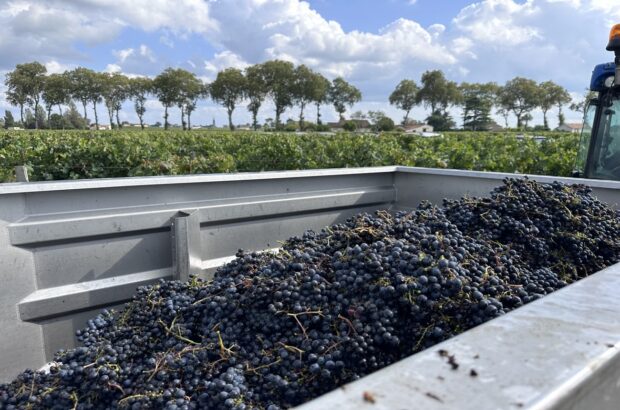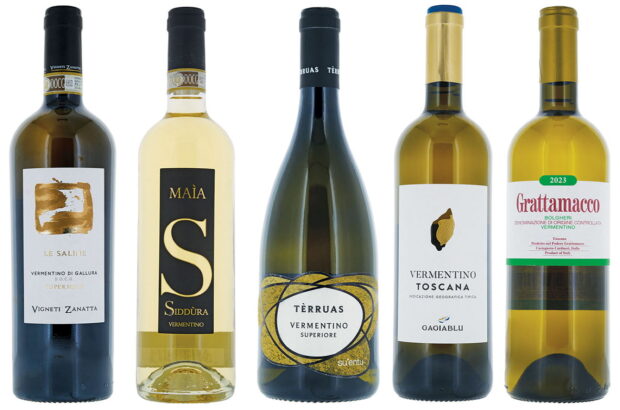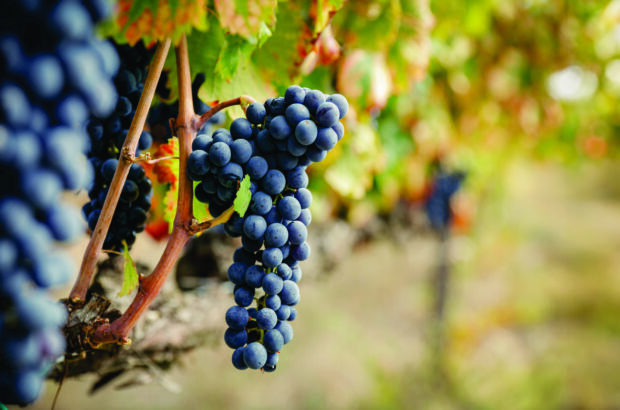Considering it has one of the oldest viticultural heritages in the world, and vies for top position with France every year as the leading producer of wine by volume, interest in wine investment is a surprisingly recent phenomenon.
One reason for this is that – unlike the established secondary markets for fine Bordeaux, Burgundy, Champagne and Rhône – only two of Italy’s 20 winemaking regions produce large proportions of ‘fine wine’: Tuscany and Piedmont.
{"content":"PC9wPgo8aDM+PHN0cm9uZz5UdXNjYW55PC9zdHJvbmc+PC9oMz4KPHA+VHVzY2FueSBoYXMgbGVkIHRoZSB3YXkgZm9yIEl0YWxpYW4gZmluZSB3aW5lIHNpbmNlIHRoZSBhZHZlbnQgb2YgdGhlIFN1cGVyVHVzY2FucyBpbiB0aGUgMTk3MHMuPC9wPgo8cD5UaGUgZmlyc3Qgbm90YWJsZSBTdXBlclR1c2NhbiB3YXMgdGhlIENhYmVybmV0IFNhdXZpZ25vbi1iYXNlZCBTYXNzaWNhaWEgaW4gQm9sZ2hlcmkuIE1hZGUgZm9yIHllYXJzIGZvciBwcml2YXRlIGNvbnN1bXB0aW9uIGJ5IG93bmVyIE1hcmNoZXNlIE1hcmlvIEluY2lzYSBkZWxsYSBSb2NjaGV0dGEsIGl0IHdhcyBmaW5hbGx5IHJlbGVhc2VkIG9udG8gdGhlIG1hcmtldCBpbiAxOTcxICh0aGUgZmFtZWQgMTk2OCB2aW50YWdlKS48L3A+CjxwPjxkaXYgY2xhc3M9ImFkLWNvbnRhaW5lciBhZC1jb250YWluZXItLW1vYmlsZSI+PGRpdiBpZD0icG9zdC1pbmxpbmUtMiIgY2xhc3M9ImlwYy1hZHZlcnQiPjwvZGl2PjwvZGl2PjwvcD4KPHA+VGlnbmFuZWxsbyBmb2xsb3dlZCBzaG9ydGx5IGFmdGVyOyBtYWRlIGJ5IFBpZXJvIEFudGlub3JpLCBNYXJpb+KAmXMgbmVwaGV3LCBpdCB3YXMgdGhlIGZpcnN0IENoaWFudGkgQ2xhc3NpY28tc3R5bGUgd2luZSBtYWRlIGVudGlyZWx5IGZyb20gbm9ibGUgcmVkIHZhcmlldGllcyBhbmQgYWdlZCBpbiBiYXJyaXF1ZXMuPC9wPgo8ZGl2IGlkPSJhdHRhY2htZW50XzQ1MjM5MCIgc3R5bGU9IndpZHRoOiA2NDBweCIgY2xhc3M9IndwLWNhcHRpb24gYWxpZ25ub25lIj48aW1nIGZldGNocHJpb3JpdHk9ImhpZ2giIGRlY29kaW5nPSJhc3luYyIgYXJpYS1kZXNjcmliZWRieT0iY2FwdGlvbi1hdHRhY2htZW50LTQ1MjM5MCIgY2xhc3M9Imxhenlsb2FkIGJsdXItdXAgc2l6ZS1sYXJnZSB3cC1pbWFnZS00NTIzOTAiIGRhdGEtcHJvY2Vzc2VkIHNyYz0iaHR0cHM6Ly93d3cuZGVjYW50ZXIuY29tL3dwLWNvbnRlbnQvdGhlbWVzL3NpbWJhLXRoZW1lL2Fzc2V0cy9pbWFnZXMvcGxhY2Vob2xkZXIucG5nIiBkYXRhLXNyYz0iaHR0cHM6Ly9rZXlhc3NldHMudGltZWluY3VrLm5ldC9pbnNwaXJld3AvbGl2ZS93cC1jb250ZW50L3VwbG9hZHMvc2l0ZXMvMzQvMjAyMS8wMS9UaWduYW5lbGxvLWJvdHRsZXMtNjMweDQyMC5qcGciIGFsdD0iVGlnbmFuZWxsbyBib3R0bGVzIiB3aWR0aD0iNjMwIiBoZWlnaHQ9IjQyMCIgZGF0YS1zaXplcz0iYXV0byIgZGF0YS1zcmNzZXQ9Imh0dHBzOi8va2V5YXNzZXRzLnRpbWVpbmN1ay5uZXQvaW5zcGlyZXdwL2xpdmUvd3AtY29udGVudC91cGxvYWRzL3NpdGVzLzM0LzIwMjEvMDEvVGlnbmFuZWxsby1ib3R0bGVzLTYzMHg0MjAuanBnIDYzMHcsIGh0dHBzOi8va2V5YXNzZXRzLnRpbWVpbmN1ay5uZXQvaW5zcGlyZXdwL2xpdmUvd3AtY29udGVudC91cGxvYWRzL3NpdGVzLzM0LzIwMjEvMDEvVGlnbmFuZWxsby1ib3R0bGVzLTMwMHgyMDAuanBnIDMwMHcsIGh0dHBzOi8va2V5YXNzZXRzLnRpbWVpbmN1ay5uZXQvaW5zcGlyZXdwL2xpdmUvd3AtY29udGVudC91cGxvYWRzL3NpdGVzLzM0LzIwMjEvMDEvVGlnbmFuZWxsby1ib3R0bGVzLTEzNXg5MC5qcGcgMTM1dywgaHR0cHM6Ly9rZXlhc3NldHMudGltZWluY3VrLm5ldC9pbnNwaXJld3AvbGl2ZS93cC1jb250ZW50L3VwbG9hZHMvc2l0ZXMvMzQvMjAyMS8wMS9UaWduYW5lbGxvLWJvdHRsZXMtMzIweDIxMy5qcGcgMzIwdywgaHR0cHM6Ly9rZXlhc3NldHMudGltZWluY3VrLm5ldC9pbnNwaXJld3AvbGl2ZS93cC1jb250ZW50L3VwbG9hZHMvc2l0ZXMvMzQvMjAyMS8wMS9UaWduYW5lbGxvLWJvdHRsZXMtNjIweDQxMy5qcGcgNjIwdywgaHR0cHM6Ly9rZXlhc3NldHMudGltZWluY3VrLm5ldC9pbnNwaXJld3AvbGl2ZS93cC1jb250ZW50L3VwbG9hZHMvc2l0ZXMvMzQvMjAyMS8wMS9UaWduYW5lbGxvLWJvdHRsZXMuanBnIDkwMHciIHNpemVzPSIobWF4LXdpZHRoOiA2MzBweCkgMTAwdncsIDYzMHB4IiAvPjxwIGlkPSJjYXB0aW9uLWF0dGFjaG1lbnQtNDUyMzkwIiBjbGFzcz0id3AtY2FwdGlvbi10ZXh0Ij5UaWduYW5lbGxvIGJvdHRsZXM8L3A+PC9kaXY+CjxwPkEgc2xldyBvZiBvdGhlciBTdXBlclR1c2NhbnMgc3Vic2VxdWVudGx5IGhpdCB0aGUgbWFya2V0IG92ZXIgdGhlIG5leHQgZmV3IHllYXJzLCBtYWRlIGJ5IHByb2R1Y2VycyBjb25maWRlbnQgdGhhdCB0aGV5IGNvdWxkIHByb2R1Y2UgYmV0dGVyIHdpbmVzIG91dHNpZGUgdGhlIHJlc3RyaWN0aXZlIERPQyBsZWdpc2xhdGlvbi48L3A+CjxkaXYgY2xhc3M9ImFkLWNvbnRhaW5lciBhZC1jb250YWluZXItLW1vYmlsZSI+PGRpdiBpZD0icG9zdC1pbmxpbmUtMyIgY2xhc3M9ImlwYy1hZHZlcnQiPjwvZGl2PjwvZGl2Pgo8cD5XaXRob3V0IGEgcmVjb2duaXNhYmxlIGRlbm9taW5hemlvbmUgb24gdGhlIGxhYmVsIHRvIGZhbGwgYmFjayBvbiwgaG93ZXZlciwgYW5kIHdpdGhvdXQgdGhlIHN1cHBvcnQgb2YgdGhlIHJlZ2lvbuKAmXMgY29uc29yemlvcyAocmVwcmVzZW50YXRpdmUgYm9kaWVzKSwgdGhlc2UgcHJvZHVjZXJzIHJlbGllZCBvbiB0aGVpciBvd24gbWFya2V0aW5nIHN0cmF0ZWdpZXMgYW5kIGluZGl2aWR1YWwgcmVwdXRhdGlvbnMuIERlc3BpdGUgdGhlIGNoYWxsZW5nZXMsIFN1cGVyVHVzY2FucyBiZWdhbiB0byBnYWluIHBvcHVsYXJpdHksIHdlbGNvbWVkIGFzIGV4b3RpYyBhbHRlcm5hdGl2ZXMgdG8gdGhlIGNlbGxhciBzdGFwbGVzIG9mIEJvcmRlYXV4IGFuZCBCdXJndW5keS48L3A+CjxwPkJ5IHRoZSBlYXJseSAyMDAwcywgU3VwZXJUdXNjYW5zIHdlcmUgaW4gdm9ndWUgYW5kIGhpZ2hseSBkZXNpcmFibGUuPC9wPgo8ZGl2IGNsYXNzPSJhZC1jb250YWluZXIgYWQtY29udGFpbmVyLS1tb2JpbGUiPjxkaXYgaWQ9InBvc3QtaW5saW5lLTQiIGNsYXNzPSJpcGMtYWR2ZXJ0Ij48L2Rpdj48L2Rpdj4KPHA+SW4gMjAxMSwgdGhlIGZpbmUgd2luZSBtYXJrZXQgc3VmZmVyZWQgYSAwJSBtYWpvciBjb3JyZWN0aW9uLCBzaGVkZGluZyBhcHByb3hpbWF0ZWx5IG9uZSB0aGlyZCBvZiBpdHMgdmFsdWUgb3ZlciB0aGUgY291cnNlIG9mIHRoZSBzdWJzZXF1ZW50IHRocmVlIHllYXJzLiBUaGUgYmlnZ2VzdCBpbXBhY3Qgb2YgdGhpcyB3YXMgZmVsdCBieSBCb3JkZWF1eCB3aGljaCwgaW4gMjAxMCwgaGFkIGFjY291bnRlZCBmb3IgYSByZWNvcmQgOTUuNyUgb2YgYWxsIHRyYWRlcyBieSB2YWx1ZSAmIzgyMTE7IGJ1dCBieSB0aGUgdGltZSBvZiB3cml0aW5nIGluIERlY2VtYmVyIDIwMjAsIHRoZSByZWdpb27igJlzIHdpbmVzIGFjY291bnQgZm9yIGp1c3QgNDIuMiUsIGFjY29yZGluZyB0byBmaWd1cmVzIGZyb20gTGl2LWV4LjwvcD4KPGRpdiBpZD0iYXR0YWNobWVudF80NTIzODUiIHN0eWxlPSJ3aWR0aDogNjQwcHgiIGNsYXNzPSJ3cC1jYXB0aW9uIGFsaWdubm9uZSI+PGltZyBkZWNvZGluZz0iYXN5bmMiIGFyaWEtZGVzY3JpYmVkYnk9ImNhcHRpb24tYXR0YWNobWVudC00NTIzODUiIGNsYXNzPSJsYXp5bG9hZCBibHVyLXVwIHNpemUtbGFyZ2Ugd3AtaW1hZ2UtNDUyMzg1IiBkYXRhLXByb2Nlc3NlZCBzcmM9Imh0dHBzOi8vd3d3LmRlY2FudGVyLmNvbS93cC1jb250ZW50L3RoZW1lcy9zaW1iYS10aGVtZS9hc3NldHMvaW1hZ2VzL3BsYWNlaG9sZGVyLnBuZyIgZGF0YS1zcmM9Imh0dHBzOi8va2V5YXNzZXRzLnRpbWVpbmN1ay5uZXQvaW5zcGlyZXdwL2xpdmUvd3AtY29udGVudC91cGxvYWRzL3NpdGVzLzM0LzIwMjEvMDEvb3JuZWxsYWlhYm90dGxlcy02MzB4NjMwLmpwZyIgYWx0PSJPcm5lbGxhaWEgYm90dGxlcyIgd2lkdGg9IjYzMCIgaGVpZ2h0PSI2MzAiIGRhdGEtc2l6ZXM9ImF1dG8iIGRhdGEtc3Jjc2V0PSJodHRwczovL2tleWFzc2V0cy50aW1laW5jdWsubmV0L2luc3BpcmV3cC9saXZlL3dwLWNvbnRlbnQvdXBsb2Fkcy9zaXRlcy8zNC8yMDIxLzAxL29ybmVsbGFpYWJvdHRsZXMtNjMweDYzMC5qcGcgNjMwdywgaHR0cHM6Ly9rZXlhc3NldHMudGltZWluY3VrLm5ldC9pbnNwaXJld3AvbGl2ZS93cC1jb250ZW50L3VwbG9hZHMvc2l0ZXMvMzQvMjAyMS8wMS9vcm5lbGxhaWFib3R0bGVzLTMwMHgzMDAuanBnIDMwMHcsIGh0dHBzOi8va2V5YXNzZXRzLnRpbWVpbmN1ay5uZXQvaW5zcGlyZXdwL2xpdmUvd3AtY29udGVudC91cGxvYWRzL3NpdGVzLzM0LzIwMjEvMDEvb3JuZWxsYWlhYm90dGxlcy0xMzV4MTM1LmpwZyAxMzV3LCBodHRwczovL2tleWFzc2V0cy50aW1laW5jdWsubmV0L2luc3BpcmV3cC9saXZlL3dwLWNvbnRlbnQvdXBsb2Fkcy9zaXRlcy8zNC8yMDIxLzAxL29ybmVsbGFpYWJvdHRsZXMtMzIweDMyMC5qcGcgMzIwdywgaHR0cHM6Ly9rZXlhc3NldHMudGltZWluY3VrLm5ldC9pbnNwaXJld3AvbGl2ZS93cC1jb250ZW50L3VwbG9hZHMvc2l0ZXMvMzQvMjAyMS8wMS9vcm5lbGxhaWFib3R0bGVzLTYyMHg2MjAuanBnIDYyMHcsIGh0dHBzOi8va2V5YXNzZXRzLnRpbWVpbmN1ay5uZXQvaW5zcGlyZXdwL2xpdmUvd3AtY29udGVudC91cGxvYWRzL3NpdGVzLzM0LzIwMjEvMDEvb3JuZWxsYWlhYm90dGxlcy01NTB4NTUwLmpwZyA1NTB3LCBodHRwczovL2tleWFzc2V0cy50aW1laW5jdWsubmV0L2luc3BpcmV3cC9saXZlL3dwLWNvbnRlbnQvdXBsb2Fkcy9zaXRlcy8zNC8yMDIxLzAxL29ybmVsbGFpYWJvdHRsZXMtNDcweDQ3MC5qcGcgNDcwdywgaHR0cHM6Ly9rZXlhc3NldHMudGltZWluY3VrLm5ldC9pbnNwaXJld3AvbGl2ZS93cC1jb250ZW50L3VwbG9hZHMvc2l0ZXMvMzQvMjAyMS8wMS9vcm5lbGxhaWFib3R0bGVzLmpwZyA2ODB3IiBzaXplcz0iKG1heC13aWR0aDogNjMwcHgpIDEwMHZ3LCA2MzBweCIgLz48cCBpZD0iY2FwdGlvbi1hdHRhY2htZW50LTQ1MjM4NSIgY2xhc3M9IndwLWNhcHRpb24tdGV4dCI+T3JuZWxsYWlhIGJvdHRsZXM8L3A+PC9kaXY+CjxkaXYgY2xhc3M9ImFkLWNvbnRhaW5lciBhZC1jb250YWluZXItLW1vYmlsZSI+PGRpdiBpZD0icG9zdC1pbmxpbmUtNSIgY2xhc3M9ImlwYy1hZHZlcnQiPjwvZGl2PjwvZGl2Pgo8aDM+PHN0cm9uZz5UaGUgcmlzZSBvZiBJdGFsaWFuIHdpbmVzPC9zdHJvbmc+PC9oMz4KPHA+SXQgd2FzIGluIHRoaXMgY2xpbWF0ZSB0aGF0IEl0YWxpYW4gd2luZXMgZm91bmQgYSB0b2UtaG9sZCBvbiB0aGUgZmluZSB3aW5lIG1hcmtldC4gSW4gMjAxMSwgSXRhbHkgcmVwcmVzZW50ZWQgbGVzcyB0aGFuIDIlIG9mIG1hcmtldCBzaGFyZSBieSB2YWx1ZSwgYWNjb3JkaW5nIHRvIExpdi1leCwgYnV0IGJ5IDIwMTkgdGhhdCBzaGFyZSBoYWQgcmlzZW4gYWJvdmUgOCUuIFRoZSBudW1iZXIgb2YgSXRhbGlhbiB3aW5lcyB0cmFkZWQgaGFkIGFsc28gaW5jcmVhc2VkIGRyYW1hdGljYWxseSwgZnJvbSBmZXdlciB0aGFuIDEwMCBTS1VzIGluIDIwMTEgdG8gbW9yZSB0aGFuIDgwMCBpbiAyMDE5LjwvcD4KPHA+VGhpcyBpbmNyZWFzZSBpbiBwb3B1bGFyaXR5IGFuZCBkaXZlcnNpdHkgY2FuIGJlIGxhcmdlbHkgYXR0cmlidXRlZCB0byBidXllcnMgc2Vla2luZyBhbHRlcm5hdGl2ZXMgYWZ0ZXIgQm9yZGVhdXjigJlzIHJlY29yZC1oaWdoIHZhbHVlcyBiZWdhbiB0byBwbHVtbWV0IGluIG1pZC0yMDExLjwvcD4KPHA+U3VwZXJUdXNjYW5zIHdlcmUgYSBuYXR1cmFsIGNob2ljZTogbW9zdCDigJMgdGhvdWdoIG5vdCBhbGwg4oCTIGFyZSBtYWRlIGZyb20gQm9yZGVhdXggdmFyaWV0aWVzIHN1Y2ggYXMgQ2FiZXJuZXQgU2F1dmlnbm9uIGFuZCBDYWJlcm5ldCBGcmFuYzsgdGhleSBoYXZlIGVzdGFibGlzaGVkIGJyYW5kIGFwcGVhbCBha2luIHRvIEJvcmRlYXV44oCZcyBmaXJzdCBncm93dGhzOyBhbmQgbW9zdCBCb3JkZWF1eCBhbmQgU3VwZXJUdXNjYW5zIGFyZSBtYWRlIGluIHN1ZmZpY2llbnQgdm9sdW1lcyB0byBhbGxvdyB0aGVtIHRvIGJlIHJlYWRpbHkgcHVyY2hhc2VkIGFuZCB0cmFkZWQuIEF0IHRoZSB0aW1lIHRoZXkgYWxzbyBvZmZlcmVkIGdvb2QgdmFsdWUgaW4gY29tcGFyaXNvbiB0byBCb3JkZWF1eC48L3A+CjxwPjxpbWcgZGVjb2Rpbmc9ImFzeW5jIiBjbGFzcz0ibGF6eWxvYWQgYmx1ci11cCBhbGlnbm5vbmUgd3AtaW1hZ2UtNDUyMDAxIHNpemUtbGFyZ2UiIGRhdGEtcHJvY2Vzc2VkIHNyYz0iaHR0cHM6Ly93d3cuZGVjYW50ZXIuY29tL3dwLWNvbnRlbnQvdGhlbWVzL3NpbWJhLXRoZW1lL2Fzc2V0cy9pbWFnZXMvcGxhY2Vob2xkZXIucG5nIiBkYXRhLXNyYz0iaHR0cHM6Ly9rZXlhc3NldHMudGltZWluY3VrLm5ldC9pbnNwaXJld3AvbGl2ZS93cC1jb250ZW50L3VwbG9hZHMvc2l0ZXMvMzQvMjAyMS8wMS9TaGFyZS1vZi1JdGFsaWFuLXRyYWRlLXZhbHVlLTYzMHg0MTcuanBnIiBhbHQ9IlNoYXJlIG9mIEl0YWxpYW4gdHJhZGUgdmFsdWUiIHdpZHRoPSI2MzAiIGhlaWdodD0iNDE3IiBkYXRhLXNpemVzPSJhdXRvIiBkYXRhLXNyY3NldD0iaHR0cHM6Ly9rZXlhc3NldHMudGltZWluY3VrLm5ldC9pbnNwaXJld3AvbGl2ZS93cC1jb250ZW50L3VwbG9hZHMvc2l0ZXMvMzQvMjAyMS8wMS9TaGFyZS1vZi1JdGFsaWFuLXRyYWRlLXZhbHVlLTYzMHg0MTcuanBnIDYzMHcsIGh0dHBzOi8va2V5YXNzZXRzLnRpbWVpbmN1ay5uZXQvaW5zcGlyZXdwL2xpdmUvd3AtY29udGVudC91cGxvYWRzL3NpdGVzLzM0LzIwMjEvMDEvU2hhcmUtb2YtSXRhbGlhbi10cmFkZS12YWx1ZS0zMDB4MTk4LmpwZyAzMDB3LCBodHRwczovL2tleWFzc2V0cy50aW1laW5jdWsubmV0L2luc3BpcmV3cC9saXZlL3dwLWNvbnRlbnQvdXBsb2Fkcy9zaXRlcy8zNC8yMDIxLzAxL1NoYXJlLW9mLUl0YWxpYW4tdHJhZGUtdmFsdWUtMTM1eDg5LmpwZyAxMzV3LCBodHRwczovL2tleWFzc2V0cy50aW1laW5jdWsubmV0L2luc3BpcmV3cC9saXZlL3dwLWNvbnRlbnQvdXBsb2Fkcy9zaXRlcy8zNC8yMDIxLzAxL1NoYXJlLW9mLUl0YWxpYW4tdHJhZGUtdmFsdWUtMzIweDIxMi5qcGcgMzIwdywgaHR0cHM6Ly9rZXlhc3NldHMudGltZWluY3VrLm5ldC9pbnNwaXJld3AvbGl2ZS93cC1jb250ZW50L3VwbG9hZHMvc2l0ZXMvMzQvMjAyMS8wMS9TaGFyZS1vZi1JdGFsaWFuLXRyYWRlLXZhbHVlLTYyMHg0MTAuanBnIDYyMHcsIGh0dHBzOi8va2V5YXNzZXRzLnRpbWVpbmN1ay5uZXQvaW5zcGlyZXdwL2xpdmUvd3AtY29udGVudC91cGxvYWRzL3NpdGVzLzM0LzIwMjEvMDEvU2hhcmUtb2YtSXRhbGlhbi10cmFkZS12YWx1ZS05MjB4NjA5LmpwZyA5MjB3LCBodHRwczovL2tleWFzc2V0cy50aW1laW5jdWsubmV0L2luc3BpcmV3cC9saXZlL3dwLWNvbnRlbnQvdXBsb2Fkcy9zaXRlcy8zNC8yMDIxLzAxL1NoYXJlLW9mLUl0YWxpYW4tdHJhZGUtdmFsdWUtMTIyMHg4MDcuanBnIDEyMjB3LCBodHRwczovL2tleWFzc2V0cy50aW1laW5jdWsubmV0L2luc3BpcmV3cC9saXZlL3dwLWNvbnRlbnQvdXBsb2Fkcy9zaXRlcy8zNC8yMDIxLzAxL1NoYXJlLW9mLUl0YWxpYW4tdHJhZGUtdmFsdWUuanBnIDEzMDB3IiBzaXplcz0iKG1heC13aWR0aDogNjMwcHgpIDEwMHZ3LCA2MzBweCIgLz48L3A+CjxoMz48c3Ryb25nPkVudGVyIFBpZWRtb250IDwvc3Ryb25nPjwvaDM+CjxwPkJ5IDIwMTcsIHRoZSBmaW5lIHdpbmUgbWFya2V0IGhhZCBsYXJnZWx5IHJlY292ZXJlZDsgaG93ZXZlciwgdGhlIGxhbmRzY2FwZSB3YXMgbm8gbG9uZ2VyIGRvbWluYXRlZCBieSBCb3JkZWF1eC4gQ29sbGVjdG9ycyBkaXNpbGx1c2lvbmVkIHdpdGggQm9yZGVhdXggd2VyZSBub3Qgb25seSBwaWNraW5nIHVwIGNhc2VzIG9mIGZpbmUgSXRhbGlhbiB3aW5lLCBidXQgYWxzbyBkcml2aW5nIGRlbWFuZCBmb3IgQnVyZ3VuZHkgYXMgZGl2ZXJzaWZpY2F0aW9uIGJlY2FtZSBhIHdhdGNod29yZCBmb3Igd2luZSBpbnZlc3RtZW50LiBQcmljZXMgZm9yIHRoZSB0b3Agd2luZXMgb2YgdGhlIENvzIJ0ZSBk4oCZT3Igc29vbiB3ZW50IHN0cmF0b3NwaGVyaWMgYXMgdGhlIGZldyBjYXNlcyBvZiBlYWNoIHdpbmUgd2VyZSBzbmFwcGVkIHVwIG9uIHByZS1hbGxvY2F0aW9uLjwvcD4KPHA+QW5kIGhlcmUgYmVnaW5zIHRoZSBzdG9yeSBmb3IgUGllZG1vbnQsIHdoaWNoIHVwIHVudGlsIDIwMTcgaGFkIGxhcmdlbHkgZXNjYXBlZCB0aGUgZ2F6ZSBvZiBjb2xsZWN0b3JzLiBJbiAyMDIwLCBob3dldmVyLCB0aGUgcmVnaW9uIGFjY291bnRzIGZvciBhYm91dCA0MCUgb2YgYWxsIEl0YWxpYW4gd2luZXMgdHJhZGVkIG9uIExpdi1leCBieSB2YWx1ZS48L3A+CjxwPkFzIHdpdGggdGhlIGRpdmVyZ2VuY2UgZnJvbSBCb3JkZWF1eCB0byBTdXBlclR1c2NhbnMsIHRoZSBzcG90bGlnaHQgYmVnYW4gdG8gc2hpZnQgZnJvbSBCdXJndW5keSB0byBQaWVkbW9udCwgYXMgQnVyZ3VuZHkgYnV5ZXJzIHdlcmUgcHJpY2VkIG91dCBvZiB0aGUgbWFya2V0IGFuZCBzb3VnaHQgdmFsdWUgYW5kIGF2YWlsYWJpbGl0eSBlbHNld2hlcmUuIFNpbWlsYXJpdGllcyBiZXR3ZWVuIHRoZSBsb3ctcHJvZHVjdGlvbiwgaGlnaC1xdWFsaXR5IG1vbm92YXJpZXRhbCBOZWJiaW9sb3Mgb2YgQmFyYmFyZXNjbyBhbmQgQmFyb2xvLCBhbmQgdGhlIFBpbm90IE5vaXJzIG9mIHRoZSBDb8yCdGUgZOKAmU9yIGF0dHJhY3RlZCBidXllcnMgc2Vla2luZyBjb21wbGV4IGV4cHJlc3Npb25zIG9mIGhpZ2hseSBkZWxpbmVhdGVkIHRlcnJvaXIuPC9wPgo8ZGl2IGlkPSJhdHRhY2htZW50XzQ1MjM4MiIgc3R5bGU9IndpZHRoOiA2NDBweCIgY2xhc3M9IndwLWNhcHRpb24gYWxpZ25ub25lIj48aW1nIGxvYWRpbmc9ImxhenkiIGRlY29kaW5nPSJhc3luYyIgYXJpYS1kZXNjcmliZWRieT0iY2FwdGlvbi1hdHRhY2htZW50LTQ1MjM4MiIgY2xhc3M9Imxhenlsb2FkIGJsdXItdXAgc2l6ZS1sYXJnZSB3cC1pbWFnZS00NTIzODIiIGRhdGEtcHJvY2Vzc2VkIHNyYz0iaHR0cHM6Ly93d3cuZGVjYW50ZXIuY29tL3dwLWNvbnRlbnQvdGhlbWVzL3NpbWJhLXRoZW1lL2Fzc2V0cy9pbWFnZXMvcGxhY2Vob2xkZXIucG5nIiBkYXRhLXNyYz0iaHR0cHM6Ly9rZXlhc3NldHMudGltZWluY3VrLm5ldC9pbnNwaXJld3AvbGl2ZS93cC1jb250ZW50L3VwbG9hZHMvc2l0ZXMvMzQvMjAyMS8wMS9HYWphLWVzdGF0ZS02MzB4NDIwLmpwZyIgYWx0PSJHYWphIHdpbmVyeSwgUGllZG1vbnQiIHdpZHRoPSI2MzAiIGhlaWdodD0iNDIwIiBkYXRhLXNpemVzPSJhdXRvIiBkYXRhLXNyY3NldD0iaHR0cHM6Ly9rZXlhc3NldHMudGltZWluY3VrLm5ldC9pbnNwaXJld3AvbGl2ZS93cC1jb250ZW50L3VwbG9hZHMvc2l0ZXMvMzQvMjAyMS8wMS9HYWphLWVzdGF0ZS02MzB4NDIwLmpwZyA2MzB3LCBodHRwczovL2tleWFzc2V0cy50aW1laW5jdWsubmV0L2luc3BpcmV3cC9saXZlL3dwLWNvbnRlbnQvdXBsb2Fkcy9zaXRlcy8zNC8yMDIxLzAxL0dhamEtZXN0YXRlLTMwMHgyMDAuanBnIDMwMHcsIGh0dHBzOi8va2V5YXNzZXRzLnRpbWVpbmN1ay5uZXQvaW5zcGlyZXdwL2xpdmUvd3AtY29udGVudC91cGxvYWRzL3NpdGVzLzM0LzIwMjEvMDEvR2FqYS1lc3RhdGUtMTM1eDkwLmpwZyAxMzV3LCBodHRwczovL2tleWFzc2V0cy50aW1laW5jdWsubmV0L2luc3BpcmV3cC9saXZlL3dwLWNvbnRlbnQvdXBsb2Fkcy9zaXRlcy8zNC8yMDIxLzAxL0dhamEtZXN0YXRlLTMyMHgyMTMuanBnIDMyMHcsIGh0dHBzOi8va2V5YXNzZXRzLnRpbWVpbmN1ay5uZXQvaW5zcGlyZXdwL2xpdmUvd3AtY29udGVudC91cGxvYWRzL3NpdGVzLzM0LzIwMjEvMDEvR2FqYS1lc3RhdGUtNjIweDQxMy5qcGcgNjIwdywgaHR0cHM6Ly9rZXlhc3NldHMudGltZWluY3VrLm5ldC9pbnNwaXJld3AvbGl2ZS93cC1jb250ZW50L3VwbG9hZHMvc2l0ZXMvMzQvMjAyMS8wMS9HYWphLWVzdGF0ZS5qcGcgODAwdyIgc2l6ZXM9IihtYXgtd2lkdGg6IDYzMHB4KSAxMDB2dywgNjMwcHgiIC8+PHAgaWQ9ImNhcHRpb24tYXR0YWNobWVudC00NTIzODIiIGNsYXNzPSJ3cC1jYXB0aW9uLXRleHQiPkdhamEgd2luZXJ5LCBQaWVkbW9udDwvcD48L2Rpdj4KPHA+QSBmb3J0dWl0b3VzIHJ1biBvZiBncmVhdCB2aW50YWdlcyB3YXMgdGhlIGZpbmFsIHBpZWNlIG9mIHRoZSBwdXp6bGUgZm9yIFBpZWRtb250LCBzaG93aW5nIHRoZSB3aW5lcyBpbiB0aGVpciBiZXN0IGxpZ2h0IGF0IGV4YWN0bHkgdGhlIHJpZ2h0IHRpbWUgdG8gaW1wcmVzcyBpdHMgZ3Jvd2luZyBhdWRpZW5jZS4gV2hpbGUgVHVzY2FueSBleHBlcmllbmNlZCBzbGlnaHRseSBtb3JlIHZhcmlhYmxlIGNvbmRpdGlvbnMsIFBpZWRtb250IGVuam95ZWQgYSBydW4gb2YgZXhjZWxsZW50IHZpbnRhZ2VzIGJldHdlZW4gMjAwNiBhbmQgMjAxMS48L3A+CjxwPkFsdGhvdWdoIDIwMTIgd2FzIGRpZmZpY3VsdCwgMjAxMyBjb250aW51ZWQgd2hlcmUgMjAxMSBsZWZ0IG9mZiBhbmQsIGFzIFN0ZXBoZW4gQnJvb2sgd3JvdGUgaW4gaGlzIDxhIGhyZWY9Imh0dHBzOi8vd3d3LmRlY2FudGVyLmNvbS9wcmVtaXVtL2Jhcm9sby0yMDE2LXJpc2VydmEtMjAxNC1yZXBvcnQtYW5kLTEwMC13aW5lcy10YXN0ZWQtNDM0ODQ3L2h0dHBzOi8vd3d3LmRlY2FudGVyLmNvbS9wcmVtaXVtL2Jhcm9sby0yMDE2LXJpc2VydmEtMjAxNC1yZXBvcnQtYW5kLTEwMC13aW5lcy10YXN0ZWQtNDM0ODQ3LyI+PHN0cm9uZz5CYXJvbG8gMjAxNiByZXBvcnQgaW4gTWFyY2ggMjAyMDwvc3Ryb25nPjwvYT46IOKAmEV2ZW4gdGhvdWdoIHRoZSAyMDE1IHZpbnRhZ2UgaGFkIGJlZW4gbWV0IHdpdGggYWNjbGFpbSwgaXQgc2VlbWVkIHRvIG1hbnkgdGhhdCB0aGUgMjAxNnMgd2VyZSBldmVuIGJldHRlciDigJMgYW4gaW1wcmVzc2lvbiBjb25maXJtZWQgYWZ0ZXIgdGFzdGluZyB0aGUgMjAxNiBCYXJvbG9zLuKAmTwvcD4KPHA+PGltZyBsb2FkaW5nPSJsYXp5IiBkZWNvZGluZz0iYXN5bmMiIGNsYXNzPSJsYXp5bG9hZCBibHVyLXVwIGFsaWdubm9uZSB3cC1pbWFnZS00NTE5OTkgc2l6ZS1sYXJnZSIgZGF0YS1wcm9jZXNzZWQgc3JjPSJodHRwczovL3d3dy5kZWNhbnRlci5jb20vd3AtY29udGVudC90aGVtZXMvc2ltYmEtdGhlbWUvYXNzZXRzL2ltYWdlcy9wbGFjZWhvbGRlci5wbmciIGRhdGEtc3JjPSJodHRwczovL2tleWFzc2V0cy50aW1laW5jdWsubmV0L2luc3BpcmV3cC9saXZlL3dwLWNvbnRlbnQvdXBsb2Fkcy9zaXRlcy8zNC8yMDIxLzAxL1R1c2NhbnktdnMtUGllZG1vbnQtSW5kZXgtUGVyZm9ybWFuY2UtNjMweDQxNy5qcGciIGFsdD0iVHVzY2FueSB2cyBQaWVkbW9udCBJbmRleCBQZXJmb3JtYW5jZSIgd2lkdGg9IjYzMCIgaGVpZ2h0PSI0MTciIGRhdGEtc2l6ZXM9ImF1dG8iIGRhdGEtc3Jjc2V0PSJodHRwczovL2tleWFzc2V0cy50aW1laW5jdWsubmV0L2luc3BpcmV3cC9saXZlL3dwLWNvbnRlbnQvdXBsb2Fkcy9zaXRlcy8zNC8yMDIxLzAxL1R1c2NhbnktdnMtUGllZG1vbnQtSW5kZXgtUGVyZm9ybWFuY2UtNjMweDQxNy5qcGcgNjMwdywgaHR0cHM6Ly9rZXlhc3NldHMudGltZWluY3VrLm5ldC9pbnNwaXJld3AvbGl2ZS93cC1jb250ZW50L3VwbG9hZHMvc2l0ZXMvMzQvMjAyMS8wMS9UdXNjYW55LXZzLVBpZWRtb250LUluZGV4LVBlcmZvcm1hbmNlLTMwMHgxOTguanBnIDMwMHcsIGh0dHBzOi8va2V5YXNzZXRzLnRpbWVpbmN1ay5uZXQvaW5zcGlyZXdwL2xpdmUvd3AtY29udGVudC91cGxvYWRzL3NpdGVzLzM0LzIwMjEvMDEvVHVzY2FueS12cy1QaWVkbW9udC1JbmRleC1QZXJmb3JtYW5jZS0xMzV4ODkuanBnIDEzNXcsIGh0dHBzOi8va2V5YXNzZXRzLnRpbWVpbmN1ay5uZXQvaW5zcGlyZXdwL2xpdmUvd3AtY29udGVudC91cGxvYWRzL3NpdGVzLzM0LzIwMjEvMDEvVHVzY2FueS12cy1QaWVkbW9udC1JbmRleC1QZXJmb3JtYW5jZS0zMjB4MjEyLmpwZyAzMjB3LCBodHRwczovL2tleWFzc2V0cy50aW1laW5jdWsubmV0L2luc3BpcmV3cC9saXZlL3dwLWNvbnRlbnQvdXBsb2Fkcy9zaXRlcy8zNC8yMDIxLzAxL1R1c2NhbnktdnMtUGllZG1vbnQtSW5kZXgtUGVyZm9ybWFuY2UtNjIweDQxMC5qcGcgNjIwdywgaHR0cHM6Ly9rZXlhc3NldHMudGltZWluY3VrLm5ldC9pbnNwaXJld3AvbGl2ZS93cC1jb250ZW50L3VwbG9hZHMvc2l0ZXMvMzQvMjAyMS8wMS9UdXNjYW55LXZzLVBpZWRtb250LUluZGV4LVBlcmZvcm1hbmNlLTkyMHg2MDkuanBnIDkyMHcsIGh0dHBzOi8va2V5YXNzZXRzLnRpbWVpbmN1ay5uZXQvaW5zcGlyZXdwL2xpdmUvd3AtY29udGVudC91cGxvYWRzL3NpdGVzLzM0LzIwMjEvMDEvVHVzY2FueS12cy1QaWVkbW9udC1JbmRleC1QZXJmb3JtYW5jZS0xMjIweDgwNy5qcGcgMTIyMHcsIGh0dHBzOi8va2V5YXNzZXRzLnRpbWVpbmN1ay5uZXQvaW5zcGlyZXdwL2xpdmUvd3AtY29udGVudC91cGxvYWRzL3NpdGVzLzM0LzIwMjEvMDEvVHVzY2FueS12cy1QaWVkbW9udC1JbmRleC1QZXJmb3JtYW5jZS5qcGcgMTMwMHciIHNpemVzPSIobWF4LXdpZHRoOiA2MzBweCkgMTAwdncsIDYzMHB4IiAvPjwvcD4KPGgzPjxzdHJvbmc+SXRhbGlhbiB3aW5lIGludmVzdG1lbnQgcGVyZm9ybWFuY2UgPC9zdHJvbmc+PC9oMz4KPHA+SGFkIHlvdSB0aGUgb3Bwb3J0dW5pdHkgdG8gcHVyY2hhc2UgYSBjYXNlIG9mIEdpYWNvbW8gQ29udGVybm\/igJlzIE1vbmZvcnRpbm8gQmFyb2xvIFJpc2VydmEgMTk5MCAyMCB5ZWFycyBhZ28sIHlvdSB3b3VsZCBiZSBkb2luZyByYXRoZXIgd2VsbCBvbiBwYXBlciB0b2RheS4gQXQgdGhlIHRpbWUgb2Ygd3JpdGluZyBpbiBEZWNlbWJlciAyMDIwLCB0aGUgMTk5MCB2aW50YWdlIG9mIHRoaXMgZXh0cmVtZWx5IHJhcmUgd2luZSDigJMgb25seSBtYWRlIGluIHRoZSBiZXN0IHllYXJzIGFuZCBpbiB0aW55IHF1YW50aXRpZXMgb2YgZmV3ZXIgdGhhbiA2MDAgY2FzZXMg4oCTIGhhcyBpbmNyZWFzZWQgaW4gdmFsdWUgYnkgOTAyJSBzaW5jZSBpdCBmaXJzdCBhcHBlYXJlZCBvbiB0aGUgbWFya2V0IGluIFNlcHRlbWJlciAxOTk5OiBhIHJhdGhlciBkaXp6eWluZyBwcm9maXQgb2YgwqMxMCw4MjQgcGVyIGNhc2UgKDEyeDc1Y2wpLCBiZWZvcmUgZmVlcy48L3A+CjxwPkJ1dCB1bnRpbCBhIGJ1eWVyIGZvciB5b3VyIHdpbmUgaXMgZm91bmQsIHRoZXJl4oCZcyBubyB3YXkgdG8gcmVsZWFzZSB0aGlzIHZhbHVlIOKAkyBhbmQgdGhpcyBpcyB3aGVyZSBQaWVkbW9udCBpbiBwYXJ0aWN1bGFyIGhhcyBoYWQgZGlmZmljdWx0eSBpbiB0aGUgcGFzdC4gSXRzIGxvdyBsZXZlbCBvZiBzZWNvbmRhcnktbWFya2V0IHRyYWRpbmcg4oCTIGEgY29uc2VxdWVuY2Ugb2YgbG93IHByb2R1Y3Rpb24gdm9sdW1lcyBjb21iaW5lZCB3aXRoIGhpZ2ggbGV2ZWxzIG9mIGRvbWVzdGljIGNvbnN1bXB0aW9uIOKAkyBoYXMgbWFkZSBpdHMgd2luZSB2YWx1ZXMgcGFydGljdWxhcmx5IHZvbGF0aWxlLCB3aXRoIGxhcmdlIHNwcmVhZHMgYmV0d2VlbiBidXkgYW5kIHNlbGwgcHJpY2VzLjwvcD4KPGRpdiBpZD0iYXR0YWNobWVudF80NTIzODYiIHN0eWxlPSJ3aWR0aDogNjEwcHgiIGNsYXNzPSJ3cC1jYXB0aW9uIGFsaWdubm9uZSI+PGltZyBsb2FkaW5nPSJsYXp5IiBkZWNvZGluZz0iYXN5bmMiIGFyaWEtZGVzY3JpYmVkYnk9ImNhcHRpb24tYXR0YWNobWVudC00NTIzODYiIGNsYXNzPSJsYXp5bG9hZCBibHVyLXVwIHNpemUtZnVsbCB3cC1pbWFnZS00NTIzODYiIGRhdGEtcHJvY2Vzc2VkIHNyYz0iaHR0cHM6Ly93d3cuZGVjYW50ZXIuY29tL3dwLWNvbnRlbnQvdGhlbWVzL3NpbWJhLXRoZW1lL2Fzc2V0cy9pbWFnZXMvcGxhY2Vob2xkZXIucG5nIiBkYXRhLXNyYz0iaHR0cHM6Ly9rZXlhc3NldHMudGltZWluY3VrLm5ldC9pbnNwaXJld3AvbGl2ZS93cC1jb250ZW50L3VwbG9hZHMvc2l0ZXMvMzQvMjAyMS8wMS9TYXNzaWNhaWEuanBnIiBhbHQ9IlNhc3NpY2FpYSIgd2lkdGg9IjYwMCIgaGVpZ2h0PSI0NTAiIGRhdGEtc2l6ZXM9ImF1dG8iIGRhdGEtc3Jjc2V0PSJodHRwczovL2tleWFzc2V0cy50aW1laW5jdWsubmV0L2luc3BpcmV3cC9saXZlL3dwLWNvbnRlbnQvdXBsb2Fkcy9zaXRlcy8zNC8yMDIxLzAxL1Nhc3NpY2FpYS5qcGcgNjAwdywgaHR0cHM6Ly9rZXlhc3NldHMudGltZWluY3VrLm5ldC9pbnNwaXJld3AvbGl2ZS93cC1jb250ZW50L3VwbG9hZHMvc2l0ZXMvMzQvMjAyMS8wMS9TYXNzaWNhaWEtMzAweDIyNS5qcGcgMzAwdywgaHR0cHM6Ly9rZXlhc3NldHMudGltZWluY3VrLm5ldC9pbnNwaXJld3AvbGl2ZS93cC1jb250ZW50L3VwbG9hZHMvc2l0ZXMvMzQvMjAyMS8wMS9TYXNzaWNhaWEtMTM1eDEwMS5qcGcgMTM1dywgaHR0cHM6Ly9rZXlhc3NldHMudGltZWluY3VrLm5ldC9pbnNwaXJld3AvbGl2ZS93cC1jb250ZW50L3VwbG9hZHMvc2l0ZXMvMzQvMjAyMS8wMS9TYXNzaWNhaWEtMzIweDI0MC5qcGcgMzIwdywgaHR0cHM6Ly9rZXlhc3NldHMudGltZWluY3VrLm5ldC9pbnNwaXJld3AvbGl2ZS93cC1jb250ZW50L3VwbG9hZHMvc2l0ZXMvMzQvMjAyMS8wMS9TYXNzaWNhaWEtNTM2eDQwMi5qcGcgNTM2dyIgc2l6ZXM9IihtYXgtd2lkdGg6IDYwMHB4KSAxMDB2dywgNjAwcHgiIC8+PHAgaWQ9ImNhcHRpb24tYXR0YWNobWVudC00NTIzODYiIGNsYXNzPSJ3cC1jYXB0aW9uLXRleHQiPlNhc3NpY2FpYTwvcD48L2Rpdj4KPHA+QW4gYW5hbHlzaXMgb2YgbWFya2V0IGRhdGEgcHJvdmlkZWQgYnkgTGl2LWV4IHJldmVhbHMgaG93IFBpZWRtb250IGhhcyBlYXRlbiBpbnRvIFR1c2NhbnnigJlzIG1vbm9wb2x5IG9uIEl0YWxpYW4gZmluZSB3aW5lcyBmb3IgaW52ZXN0bWVudC4gSW4gMjAxNiwgU3VwZXJUdXNjYW5zIGFjY291bnRlZCBmb3IgbmVhcmx5IDYwJSBvZiBJdGFsaWFuIHdpbmUgdHJhZGVzIGJ5IHZhbHVlLCBidXQgYnkgdGhlIGVuZCBvZiAyMDIwLCB0aGlzIHNoYXJlIGhhZCBiZWVuIHJlZHVjZWQgdG8ganVzdCBvdmVyIG9uZSB0aGlyZCwgd2l0aCBQaWVkbW9udCBsYXJnZWx5IGZpbGxpbmcgdGhlIHZvaWQuPC9wPgo8aDM+SW52ZXN0bWVudCBwb3RlbnRpYWw8L2gzPgo8cD5XaGVuIGNvbnNpZGVyaW5nIGludmVzdG1lbnQgcG90ZW50aWFsIGZvciBJdGFsaWFuIHdpbmVzLCBvbmUgbXVzdCBjb25zaWRlciBub3Qgb25seSBkZXNpcmFiaWxpdHkgKGJyYW5kL3dpbmVtYWtlciBhcHBlYWw7IHByb2R1Y3Rpb24gdm9sdW1lOyBjcml0aWNz4oCZIHNjb3JlcywgZXRjKSwgYnV0IGFsc28gdmludGFnZSBxdWFsaXR5LiBHaWFjb21vIENvbnRlcm5v4oCZcyBNb25mb3J0aW5vIFJpc2VydmEgMTk5MCBtZW50aW9uZWQgYWJvdmUgaXMgYSBwZXJmZWN0IGV4YW1wbGUgb2YgaG93IHRoZXNlIGZhY3RvcnMgY2FuIHdvcmsgaW5jcmVkaWJseSBlZmZlY3RpdmVseSBpbiB0YW5kZW0uPC9wPgo8cD5Bbm90aGVyIGV4YW1wbGUgZnJvbSB0aGUgc2FtZSB5ZWFyIGlzIEdpdXNlcHBlIE1hc2NhcmVsbG\/igJlzIE1vbnByaXZhdG8gQmFyb2xvIDE5OTAuIE1vbnByaXZhdG8gaXMgb25lIG9mIEJhcm9sb+KAmXMgbW9zdCBlc3RlZW1lZCB2aW5leWFyZHMsIGFuZCBNYXNjYXJlbGxvIG93bnMgYWxsIGJ1dCAwLjg3aGEgb2YgaXQuIFZhbHVlZCBhdCDCozQ2NSAocGVyIDEyeDc1Y2wgYm90dGxlcykgd2hlbiBpdCBmaXJzdCBhcHBlYXJlZCBvbiB0aGUgbWFya2V0IGluIEFwcmlsIDIwMDAsIHRoZSB3aW5lIGhhcyBzaW5jZSBpbmNyZWFzZWQgaW4gdmFsdWUgYnkgYSBtb251bWVudGFsIDIsMDU0Ljg0JSwgb3IgwqM5LDU1NSBiZWZvcmUgZmVlcy48L3A+CjxwPk90aGVyIGZhY3RvcnMgY2FuIGNvbWUgaW50byBwbGF5IHRvbywgYW5kIOKAmHVub2J0YWluaXVt4oCZIGNhbiBoYXZlIGEgc2lnbmlmaWNhbnQgZWZmZWN0IG9uIHZhbHVlcyDigJMgYXMgZGlzY3Vzc2VkIGFib3ZlIHdpdGggcmVmZXJlbmNlIHRvIEJ1cmd1bmR54oCZcyBiZXN0IHdpbmVzLjwvcD4KPGgzPlRoZSAmIzgyMTY7dW5vYnRhaW5pdW0mIzgyMTc7IGZhY3RvcjwvaDM+CjxwPkluIHRoZSBmb2xsb3dpbmcgY2FzZSwgaG93ZXZlciwgdGhlIHVub2J0YWluaXVtIGZhY3RvciByZWxhdGVzIHRvIHRoZSBlc3RhdGUgb3duZXIgYW5kIGxlZ2VuZGFyeSB3aW5lbWFrZXIgQnJ1bm8gR2lhY29zYSwgd2hvIHN1ZmZlcmVkIGEgc3Ryb2tlIGluIDIwMDYgYW5kIHNhZGx5IHBhc3NlZCBhd2F5IGluIDIwMTguPC9wPgo8cD5IaXMgRmFsbGV0dG8sIFZpZ25hIExlIFJvY2NoZSBCYXJvbG8gUmlzZXJ2YSB3YXMgYSBzdGFyIHBlcmZvcm1lciBpbiBpdHMgb3duIHJpZ2h0LCBhIGN1bHQgd2luZSBtYWRlIG9ubHkgaW4gdGhlIGJlc3QgeWVhcnMgYW5kIHJlY29nbmlzZWQgYnkgaXRzIGZhbW91cyByZWQgbGFiZWwuIFRoZSAyMDAxIHZpbnRhZ2UgaGFkIGFscmVhZHkgYWNoaWV2ZWQgaW1wcmVzc2l2ZSBncm93dGggb2YgMjkxLjY3JSAowqMzLDUwMCBiZWZvcmUgZmVlcykgc2luY2UgaXRzIHJlbGVhc2UgaW4gTWFyY2ggMjAwNyB1cCB0byB0aGUgZW5kIG9mIDIwMTcuPC9wPgo8ZGl2IGlkPSJhdHRhY2htZW50XzQ1MjM4MyIgc3R5bGU9IndpZHRoOiA2MTBweCIgY2xhc3M9IndwLWNhcHRpb24gYWxpZ25ub25lIj48aW1nIGxvYWRpbmc9ImxhenkiIGRlY29kaW5nPSJhc3luYyIgYXJpYS1kZXNjcmliZWRieT0iY2FwdGlvbi1hdHRhY2htZW50LTQ1MjM4MyIgY2xhc3M9Imxhenlsb2FkIGJsdXItdXAgc2l6ZS1mdWxsIHdwLWltYWdlLTQ1MjM4MyIgZGF0YS1wcm9jZXNzZWQgc3JjPSJodHRwczovL3d3dy5kZWNhbnRlci5jb20vd3AtY29udGVudC90aGVtZXMvc2ltYmEtdGhlbWUvYXNzZXRzL2ltYWdlcy9wbGFjZWhvbGRlci5wbmciIGRhdGEtc3JjPSJodHRwczovL2tleWFzc2V0cy50aW1laW5jdWsubmV0L2luc3BpcmV3cC9saXZlL3dwLWNvbnRlbnQvdXBsb2Fkcy9zaXRlcy8zNC8yMDIxLzAxL0dpYWNvc2EuanBnIiBhbHQ9IkdpYWNvc2EiIHdpZHRoPSI2MDAiIGhlaWdodD0iNDAwIiBkYXRhLXNpemVzPSJhdXRvIiBkYXRhLXNyY3NldD0iaHR0cHM6Ly9rZXlhc3NldHMudGltZWluY3VrLm5ldC9pbnNwaXJld3AvbGl2ZS93cC1jb250ZW50L3VwbG9hZHMvc2l0ZXMvMzQvMjAyMS8wMS9HaWFjb3NhLmpwZyA2MDB3LCBodHRwczovL2tleWFzc2V0cy50aW1laW5jdWsubmV0L2luc3BpcmV3cC9saXZlL3dwLWNvbnRlbnQvdXBsb2Fkcy9zaXRlcy8zNC8yMDIxLzAxL0dpYWNvc2EtMzAweDIwMC5qcGcgMzAwdywgaHR0cHM6Ly9rZXlhc3NldHMudGltZWluY3VrLm5ldC9pbnNwaXJld3AvbGl2ZS93cC1jb250ZW50L3VwbG9hZHMvc2l0ZXMvMzQvMjAyMS8wMS9HaWFjb3NhLTEzNXg5MC5qcGcgMTM1dywgaHR0cHM6Ly9rZXlhc3NldHMudGltZWluY3VrLm5ldC9pbnNwaXJld3AvbGl2ZS93cC1jb250ZW50L3VwbG9hZHMvc2l0ZXMvMzQvMjAyMS8wMS9HaWFjb3NhLTMyMHgyMTMuanBnIDMyMHciIHNpemVzPSIobWF4LXdpZHRoOiA2MDBweCkgMTAwdncsIDYwMHB4IiAvPjxwIGlkPSJjYXB0aW9uLWF0dGFjaG1lbnQtNDUyMzgzIiBjbGFzcz0id3AtY2FwdGlvbi10ZXh0Ij5CcnVubyBHaWFjb3NhIGxhYmVsPC9wPjwvZGl2Pgo8cD5CdXQgR2lhY29zYeKAmXMgZGVhdGggaW4gSmFudWFyeSAyMDE4IHdhcyB0aGUgY2F0YWx5c3QgZm9yIGFjY2VsZXJhdGVkIGdyb3d0aCB0aHJvdWdob3V0IDIwMTgsIHRoZSB3aW5lIGluY3JlYXNpbmcgaW4gdmFsdWUgYnkgYSBmdXJ0aGVyIDYzLjgzJSAowqMzLDAwMCkgaW4ganVzdCAxMiBtb250aHMuIFRoaXMgbGlrZWx5IHJlZmxlY3RlZCBidXllciByZWFsaXNhdGlvbiB0aGF0IHRoZSAyMDAxIHdhcyB0aGUgcGVudWx0aW1hdGUgd2luZSBtYWRlIGJ5IEdpYWNvc2HigJlzIG93biBoYW5kcywgYXMgMjAwNCB3YXMgdGhlIGZpbmFsIHZpbnRhZ2UgaGUgYm90dGxlZCBiZWZvcmUgaGlzIHN0cm9rZS4gQXQgdGhlIHRpbWUsIHRoZSAyMDA0IGNoYXJnZWQgYW4gODAuNzYlIHByZW1pdW0gYW5kIHRoZSAyMDAxIHRoZXJlZm9yZSByZXByZXNlbnRlZCBnb29kIHZhbHVlIHRvIGJ1eWVycy4gQnkgTm92ZW1iZXIgMjAyMCwgaW50ZXJlc3RpbmdseSwgdGhpcyBnYXAgaGFkIG5hcnJvd2VkIHRvIDIzLjkzJS48L3A+CjxoMz5UaWduYW5lbGxvPC9oMz4KPHA+U3VwZXJUdXNjYW4gVGlnbmFuZWxsbyBpcyBvbmUgb2YgSXRhbHnigJlzIGJpZ2dlc3QgaW50ZXJuYXRpb25hbCBzdWNjZXNzIHN0b3JpZXMgd2hlbiBpdCBjb21lcyB0byBmaW5lIHdpbmUuIFByb2R1Y2VkIGluIHZvbHVtZXMgY2FwYWJsZSBvZiBzbGFraW5nIHRoZSB0aGlyc3Qgb2YgcmVzdGF1cmFudC0gZ29lcnMgYW5kIHdpbmUgbG92ZXJzIGFyb3VuZCB0aGUgd29ybGQsIGl04oCZcyBhIHByaW1lIEl0YWxpYW4gZXhhbXBsZSBvZiBsaXF1aWRpdHk6IHZvbHVtZSBpcyBoaWdoLCBxdWFsaXR5IGlzIGhpZ2gsIGRlbWFuZCBpcyBoaWdoLCBhbmQgdGhlcmVmb3JlIGl04oCZcyBlYXNpZXIgdG8gc2VsbC48L3A+CjxwPlRoZSAyMDAxIHZpbnRhZ2UsIHJlbGVhc2VkIGluIEZlYnJ1YXJ5IDIwMDQsIGhhcyBpbmNyZWFzZWQgZnJvbSBhIHJlbGVhc2UgcHJpY2Ugb2YgwqMzMzAgdG8gwqMxLDA4MCBpbiBOb3ZlbWJlciAyMDIwLCBhIGNoYW5nZSBvZiAyMjcuMjclLiBUaGUgMjAwNiB2aW50YWdlLCByZWxlYXNlZCBhdCDCozUwMCBpbiBNYXJjaCAyMDA5LCBoYWQgZ2FpbmVkIMKjOTAwIGJ5IE5vdmVtYmVyIDIwMjAsIGFuIGluY3JlYXNlIG9mIDE4MCUuPC9wPgo8cD5UdXNjYW55IGlzIG9mIGNvdXJzZSBob21lIHRvIHBsZW50eSBvZiBvdGhlciBpbnZlc3RhYmxlIGdlbXMgdG9vLiBUaGUgMjAwMSB2aW50YWdlIG9mIHRvcC10aWVyIFN1cGVyVHVzY2FucyBoYXZlIGFsbCBzZWVuIHN0cm9uZyBnYWlucyBzaW5jZSB0aGVpciByZWxlYXNlcyBpbiAyMDA0OjwvcD4KPHVsPgo8bGk+VGlnbmFuZWxsbyAoKzIyNy4yNyUpLDwvbGk+CjxsaT5Tb2xhaWEgKCsyNTkuNzIlKSw8L2xpPgo8bGk+R3VhZG8gYWwgVGFzc28gKCsyNzkuNzUlKSw8L2xpPgo8bGk+U2Fzc2ljYWlhICgrMzI0LjYyJSksPC9saT4KPGxpPk9ybmVsbGFpYSAoKzMyNS40NSUpLDwvbGk+CjxsaT5Gb250b2Rp4oCZcyBGbGFjY2lhbmVsbG8gKDMyOS43MyUpPC9saT4KPC91bD4KPHA+TWFzc2V0byAyMDAxLCBtZWFud2hpbGUsIGhhcyBpbmNyZWFzZWQgaW4gdmFsdWUgYnkgYSBtdWNoIG1vcmUgaW1wcmVzc2l2ZSA2NDQuODYlLCBubyBkb3VidCB0aGFua3MgaW4gcGFydCB0byBpdHMgbXVjaCBtb3JlIGxpbWl0ZWQgYXZhaWxhYmlsaXR5IGFuZCB2ZXJ5IGhpZ2ggc2NvcmVzIGZyb20gY3JpdGljcy48L3A+CjxwPjxpbWcgbG9hZGluZz0ibGF6eSIgZGVjb2Rpbmc9ImFzeW5jIiBjbGFzcz0ibGF6eWxvYWQgYmx1ci11cCBhbGlnbm5vbmUgd3AtaW1hZ2UtNDUyMDAyIHNpemUtbGFyZ2UiIGRhdGEtcHJvY2Vzc2VkIHNyYz0iaHR0cHM6Ly93d3cuZGVjYW50ZXIuY29tL3dwLWNvbnRlbnQvdGhlbWVzL3NpbWJhLXRoZW1lL2Fzc2V0cy9pbWFnZXMvcGxhY2Vob2xkZXIucG5nIiBkYXRhLXNyYz0iaHR0cHM6Ly9rZXlhc3NldHMudGltZWluY3VrLm5ldC9pbnNwaXJld3AvbGl2ZS93cC1jb250ZW50L3VwbG9hZHMvc2l0ZXMvMzQvMjAyMS8wMS9JdGFseS1SZWdpb25hbC10cmFkZS1zaGFyZS02MzB4NDE3LmpwZyIgYWx0PSIiIHdpZHRoPSI2MzAiIGhlaWdodD0iNDE3IiBkYXRhLXNpemVzPSJhdXRvIiBkYXRhLXNyY3NldD0iaHR0cHM6Ly9rZXlhc3NldHMudGltZWluY3VrLm5ldC9pbnNwaXJld3AvbGl2ZS93cC1jb250ZW50L3VwbG9hZHMvc2l0ZXMvMzQvMjAyMS8wMS9JdGFseS1SZWdpb25hbC10cmFkZS1zaGFyZS02MzB4NDE3LmpwZyA2MzB3LCBodHRwczovL2tleWFzc2V0cy50aW1laW5jdWsubmV0L2luc3BpcmV3cC9saXZlL3dwLWNvbnRlbnQvdXBsb2Fkcy9zaXRlcy8zNC8yMDIxLzAxL0l0YWx5LVJlZ2lvbmFsLXRyYWRlLXNoYXJlLTMwMHgxOTguanBnIDMwMHcsIGh0dHBzOi8va2V5YXNzZXRzLnRpbWVpbmN1ay5uZXQvaW5zcGlyZXdwL2xpdmUvd3AtY29udGVudC91cGxvYWRzL3NpdGVzLzM0LzIwMjEvMDEvSXRhbHktUmVnaW9uYWwtdHJhZGUtc2hhcmUtMTM1eDg5LmpwZyAxMzV3LCBodHRwczovL2tleWFzc2V0cy50aW1laW5jdWsubmV0L2luc3BpcmV3cC9saXZlL3dwLWNvbnRlbnQvdXBsb2Fkcy9zaXRlcy8zNC8yMDIxLzAxL0l0YWx5LVJlZ2lvbmFsLXRyYWRlLXNoYXJlLTMyMHgyMTIuanBnIDMyMHcsIGh0dHBzOi8va2V5YXNzZXRzLnRpbWVpbmN1ay5uZXQvaW5zcGlyZXdwL2xpdmUvd3AtY29udGVudC91cGxvYWRzL3NpdGVzLzM0LzIwMjEvMDEvSXRhbHktUmVnaW9uYWwtdHJhZGUtc2hhcmUtNjIweDQxMC5qcGcgNjIwdywgaHR0cHM6Ly9rZXlhc3NldHMudGltZWluY3VrLm5ldC9pbnNwaXJld3AvbGl2ZS93cC1jb250ZW50L3VwbG9hZHMvc2l0ZXMvMzQvMjAyMS8wMS9JdGFseS1SZWdpb25hbC10cmFkZS1zaGFyZS05MjB4NjA5LmpwZyA5MjB3LCBodHRwczovL2tleWFzc2V0cy50aW1laW5jdWsubmV0L2luc3BpcmV3cC9saXZlL3dwLWNvbnRlbnQvdXBsb2Fkcy9zaXRlcy8zNC8yMDIxLzAxL0l0YWx5LVJlZ2lvbmFsLXRyYWRlLXNoYXJlLTEyMjB4ODA3LmpwZyAxMjIwdywgaHR0cHM6Ly9rZXlhc3NldHMudGltZWluY3VrLm5ldC9pbnNwaXJld3AvbGl2ZS93cC1jb250ZW50L3VwbG9hZHMvc2l0ZXMvMzQvMjAyMS8wMS9JdGFseS1SZWdpb25hbC10cmFkZS1zaGFyZS5qcGcgMTMwMHciIHNpemVzPSIobWF4LXdpZHRoOiA2MzBweCkgMTAwdncsIDYzMHB4IiAvPjwvcD4KPGgzPjxzdHJvbmc+TG9va2luZyBhaGVhZCA8L3N0cm9uZz48L2gzPgo8cD5JdOKAmXMgdGVsbGluZyB0aGF0IExpdi1leOKAmXMgbW9zdCB0cmFkZWQgd2luZSBieSB2YWx1ZSBpbiAyMDIwIHdhcyBHaWFjb21vIENvbnRlcm5v4oCZcyBNb25mb3J0aW5vIEJhcm9sbyBSaXNlcnZhIDIwMTMsIHdpdGggU2Fzc2ljYWlhIDIwMTcgYW5kIFRpZ25hbmVsbG8gMjAxNiBhbHNvIGZlYXR1cmluZyBpbiB0aGUgdG9wIDEwLiBJZiAyMDIwIHdhc27igJl0IHRoZSB5ZWFyIHRoYXQgSXRhbHkgZ290IGEgZmlybSBncmFzcCBvZiB0aGUgbWFya2V0cywgaXQgd2FzIGNlcnRhaW5seSB0aGUgeWVhciB0aGF0IGdhdmUgaXQgYSBsZWctdXAuPC9wPgo8cD5JbiBEZWNlbWJlciAyMDIwLCBJdGFseeKAmXMgbWFya2V0IHNoYXJlIG9mIGZpbmUgd2luZSB0cmFkZSBieSB2YWx1ZSBzdG9vZCBhdCAxNS4zJSwgdXAgZnJvbSA4LjglIGp1c3QgYSB5ZWFyIGVhcmxpZXIuIFRoaXMgY2FuIGxhcmdlbHkgYmUgZXhwbGFpbmVkIGJ5IFVTIHRyYWRlIHRhcmlmZnMgb24gbWFueSBFdXJvcGVhbiB3aW5lcywgd2hpY2ggYXJlIHN0aWxsIHNldCBhdCAyNSUgYXQgdGhlIHRpbWUgb2Ygd3JpdGluZywgc3RpZmxpbmcgbWFueSDigJhicmVhZCBhbmQgYnV0dGVy4oCZIGZpbmUgd2luZXMgc3VjaCBhcyBCb3JkZWF1eCBhbmQgQnVyZ3VuZHkuPC9wPgo8cD5JdGFsaWFuIGltcG9ydHMgaGF2ZSBiZWVuIGxlZnQgdW5zY2F0aGVkIGJ5IHRoaXMgdGF4IGhpa2UgYW5kIGhhdmUgY29uc2VxdWVudGx5IHBpY2tlZCB1cCBtYXJrZXQgc2hhcmUuIFRoZSBrZXkgcXVlc3Rpb24gaXMgd2hldGhlciBhIEJpZGVuIGFkbWluaXN0cmF0aW9uIHdpbGwgcmVkdWNlIG9yIHJldmVyc2UgVHJ1bXDigJlzIE9jdG9iZXIgMjAxOSB0YXJpZmYgaW1wb3NpdGlvbnMuIElmIHRoZSB0YXJpZmZzIHJlbWFpbiwgdGhlcmXigJlzIGEgcmVhbCBwb3NzaWJpbGl0eSB0aGF0IEl0YWxpYW4gZmluZSB3aW5lIHdpbGwgY29udGludWUgdG8gaW5jcmVhc2UgaXRzIG1hcmtldCBzaGFyZSBhcyBVUyBidXllcnMgZmluZCB2YWx1ZSBpbiBJdGFseTsgYW5kIGFzIGRlbWFuZCBjb250aW51ZXMgdG8gcmlzZSwgaXTigJlzIHBvc3NpYmxlIHRoYXQgdmFsdWVzIHdpbGwgZm9sbG93IHN1aXQgYXMgc3VwcGxpZXMgYXJlIHN0cmV0Y2hlZC4gQW4gb3Bwb3J0dW5pdHksIHBlcmhhcHMsIGZvciBpbnZlc3RvcnMuPC9wPgo8aHI+CjxkaXYgY2xhc3M9ImJyZWFrb3V0IHBhbGV0dGUtYSBwYW5lbCBwYW5lbC1kZWZhdWx0Ij48ZGl2IGNsYXNzPSJwYW5lbC1ib2R5Ij48ZGl2IGNsYXNzPSdicmVha291dC1jb250ZW50Jz48L3A+CjxoMiBzdHlsZT0idGV4dC1hbGlnbjogbGVmdCI+PHN0cm9uZz5JdGFsaWFuIHdpbmUgaW52ZXN0bWVudCBzdXBlcnN0YXJzIDwvc3Ryb25nPjwvaDI+CjxwIHN0eWxlPSJ0ZXh0LWFsaWduOiBsZWZ0Ij48ZW0+RmlndXJlcyBwcm92aWRlZCBieSBMaXYtZXgsIGJhc2VkIG9uIGN1cnJlbnQgbWFya2V0IHByaWNlcyBmb3IgMTJ4NzVjbCBmb3JtYXQuIFByaWNlcyBjb3JyZWN0IGFzIG9mIDMwIE5vdmVtYmVyIDIwMjAuPC9lbT48L3A+CjxoMyBzdHlsZT0idGV4dC1hbGlnbjogbGVmdCI+PHN0cm9uZz5UdXNjYW55PC9zdHJvbmc+PC9oMz4KPHAgc3R5bGU9InRleHQtYWxpZ246IGxlZnQiPjxzdHJvbmc+TWFzc2V0bywgVG9zY2FuYSAyMDAxPC9zdHJvbmc+IMKjOSw5OTY7ICs2NDQuODYlIChBdWd1c3QgMjAwNC1Ob3ZlbWJlciAyMDIwKTwvcD4KPHAgc3R5bGU9InRleHQtYWxpZ246IGxlZnQiPjxzdHJvbmc+Rm9udG9kaSwgRmxhY2NpYW5lbGxvIGRlbGxhIFBpZXZlLCBDb2xsaSBUb3NjYW5hIENlbnRyYWxlIDIwMDE8L3N0cm9uZz4gwqMxLDI3MjsgKzMyOS43MyUgKE9jdG9iZXIgMjAwNC1Ob3ZlbWJlciAyMDIwKTwvcD4KPHAgc3R5bGU9InRleHQtYWxpZ246IGxlZnQiPjxzdHJvbmc+T3JuZWxsYWlhLCBCb2xnaGVyaSBTdXBlcmlvcmUgMjAwMTwvc3Ryb25nPiDCozIsMzQwOyArMzI1LjQ1JSAoSmFudWFyeSAyMDA0LU5vdmVtYmVyIDIwMjApPC9wPgo8cCBzdHlsZT0idGV4dC1hbGlnbjogbGVmdCI+PHN0cm9uZz5TYXNzaWNhaWEsIEJvbGdoZXJpIFNhc3NpY2FpYSAyMDAxPC9zdHJvbmc+IMKjMiw3NjA7ICszMjQuNjIlIChKYW51YXJ5IDIwMDQtTm92ZW1iZXIgMjAyMCk8L3A+CjxwIHN0eWxlPSJ0ZXh0LWFsaWduOiBsZWZ0Ij48c3Ryb25nPlRpZ25hbmVsbG8sIFRvc2NhbmEgMjAwMTwvc3Ryb25nPiDCozEsMDgwOyArMjI3LjI3JSAoRmVicnVhcnkgMjAwNC1Ob3ZlbWJlciAyMDIwKTwvcD4KPHAgc3R5bGU9InRleHQtYWxpZ246IGxlZnQiPjxzdHJvbmc+UGV0cm9sbywgR2FsYXRyb25hLCBUb3NjYW5hIDIwMDQ8L3N0cm9uZz4gwqMxLDYzMjsgKzIyMS4yNiUgKERlY2VtYmVyIDIwMDYtTm92ZW1iZXIgMjAyMCk8L3A+CjxwIHN0eWxlPSJ0ZXh0LWFsaWduOiBsZWZ0Ij48c3Ryb25nPkJpb25kaS1TYW50aSwgUmlzZXJ2YSwgQnJ1bmVsbG8gZGkgTW9udGFsY2lubyAyMDA0PC9zdHJvbmc+IMKjNCwyOTA7ICs5Ni40MyUgKEZlYnJ1YXJ5IDIwMTEtTm92ZW1iZXIgMjAyMCk8L3A+Cjxocj4KPGgzIHN0eWxlPSJ0ZXh0LWFsaWduOiBsZWZ0Ij48c3Ryb25nPlBpZWRtb250PC9zdHJvbmc+PC9oMz4KPHAgc3R5bGU9InRleHQtYWxpZ246IGxlZnQiPjxzdHJvbmc+R2l1c2VwcGUgTWFzY2FyZWxsbywgTW9ucHJpdmF0bywgQmFyb2xvIDE5OTA8L3N0cm9uZz4gwqMxMCwwMjA7ICsyLDA1NC44NCUgKEFwcmlsIDIwMDAtTm92ZW1iZXIgMjAyMCk8L3A+CjxkaXYgY2xhc3M9ImluamVjdGlvbiI+PC9kaXY+CjxwIHN0eWxlPSJ0ZXh0LWFsaWduOiBsZWZ0Ij48c3Ryb25nPkdpdXNlcHBlIFJpbmFsZGksIEJydW5hdGUtTGUgQ29zdGUsIEJhcm9sbyAyMDA0PC9zdHJvbmc+IMKjNCw4MTI7ICsxLDEzMy44NSUgKE1heSAyMDA4LU5vdmVtYmVyIDIwMjApPC9wPgo8cCBzdHlsZT0idGV4dC1hbGlnbjogbGVmdCI+PHN0cm9uZz5HaWFjb21vIENvbnRlcm5vLCBNb25mb3J0aW5vIFJpc2VydmEsIEJhcm9sbyAxOTkwPC9zdHJvbmc+IMKjMTIsMDI0OyArOTAyJSAoU2VwdGVtYmVyIDE5OTktTm92ZW1iZXIgMjAyMCk8L3A+CjxwIHN0eWxlPSJ0ZXh0LWFsaWduOiBsZWZ0Ij48c3Ryb25nPkJydW5vIEdpYWNvc2EsIEZhbGxldHRvLCBWaWduYSBMZSBSb2NjaGUgUmlzZXJ2YSwgQmFyb2xvIDIwMDE8L3N0cm9uZz4gwqM3LDI2MjsgKzUwNS4xNyUgKE1hcmNoIDIwMDctTm92ZW1iZXIgMjAyMCk8L3A+CjxwIHN0eWxlPSJ0ZXh0LWFsaWduOiBsZWZ0Ij48c3Ryb25nPkdhamEsIEJhcmJhcmVzY28gMjAwNjwvc3Ryb25nPiDCozIsODcyOyArMTg1Ljc3JSAoSnVuZSAyMDA5LU5vdmVtYmVyIDIwMjApPC9wPgo8cD4KPC9kaXY+PGRpdiBjbGFzcz0nYnJlYWtvdXQtYnV0dG9ucyc+PGRpdiBjbGFzcz0ncm93Jz48L2Rpdj48L2Rpdj48L2Rpdj48L2Rpdj4KPGhyPgo8cD48ZW0+TGl2LWV4IGlzIHRoZSBnbG9iYWwgbWFya2V0cGxhY2UgZm9yIHRoZSB3aW5lIHRyYWRlLiBJdCBoYXMgNDc1IG1lbWJlcnMgaW4gNDIgZGlmZmVyZW50IGNvdW50cmllcywgYW5kIHN1cHBsaWVzIHRoZW0gd2l0aCB0aGUgdG9vbHMgdGhleSBuZWVkIHRvIHByaWNlLCBzb3VyY2UgYW5kIHNlbGwgd2luZSBtb3JlIGVmZmljaWVudGx5PC9lbT48L3A+CjxwPgo="}












